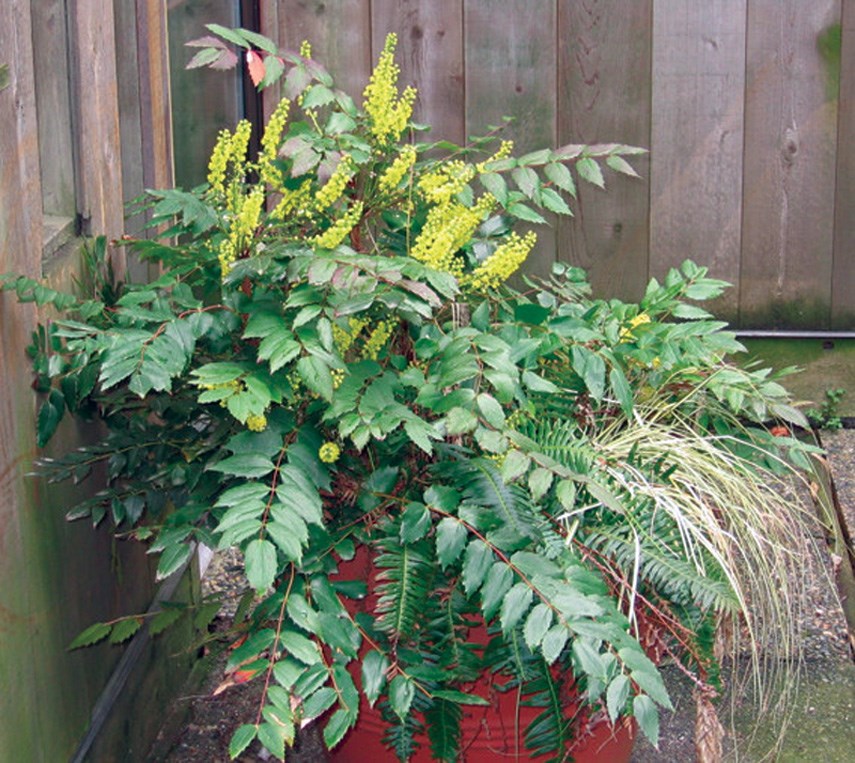This is a great time of year to show off evergreen plants.
Deciduous leaves are gone, flowers are not yet abundant, and so evergreens, especially those with a great textural interest, can be the stars.
Mahonia nervosa is an attractive pant that I often use in local gardens. It is commonly found in local forests as the understory plant accompanying second growth Douglas fir and Western red cedar trees. (Not to be mistaken for its larger, very prickly cousin M. aquifolium.)
It will tolerate that tricky dry shade area, which is even trickier near large cedar trees, and is a good choice for steep slopes. It makes a good low barrier with its somewhat stiff prickly leaves, is not easily damaged by snow and provides shelter for birds.
It can tolerate some sun, and if the sun hits the leaves, they become a showy bright red or maroon colour. It grows to about 0.6 metres high and can spread to 1.22m wide.
Blooming in early spring, the bright yellow flowers often brighten up gloomy spring days, the scented flowers attract bees and the nectar is enjoyed by Anna’s hummingbirds.
The fruits are bright blue berries ripening in the fall, not so tasty, but traditionally mixed with salal berries, and more recently used in jelly.
I have read that they make an interesting lemony drink but have not tried this myself. M. nervosa are not easy to divide or seed, so are best purchased to establish a planting. Our local nurseries often carry good one-gallon size plants.
They are slow to establish but will spread with time, and are an appropriate plant when considering fires, it commonly sprouts and grows vigorously after fire, it may regrow from seed, but more often from the underground rhizomes.
This would be a good plant for shady boulevard areas where grass would struggle, and especially appropriate to protect the roots of large evergreen trees from foot traffic stress. Native plants are often slow to establish, so it is advantageous to incorporate organic matter into the soil when planting.
I often use Sea Soil original as it is Organic Materials Review Institute certified and helps gets new plants off to a good start. If you have your own good compost mix, it is a good soil amender.
As with any new plants, they will need attention during their first growing season to make sure the young roots do not become drought stressed.
Heather Schamehorn is a certified residential landscape designer, educator, sustainability advocate and acupressure therapist. Contact via perennialpleasures.ca



